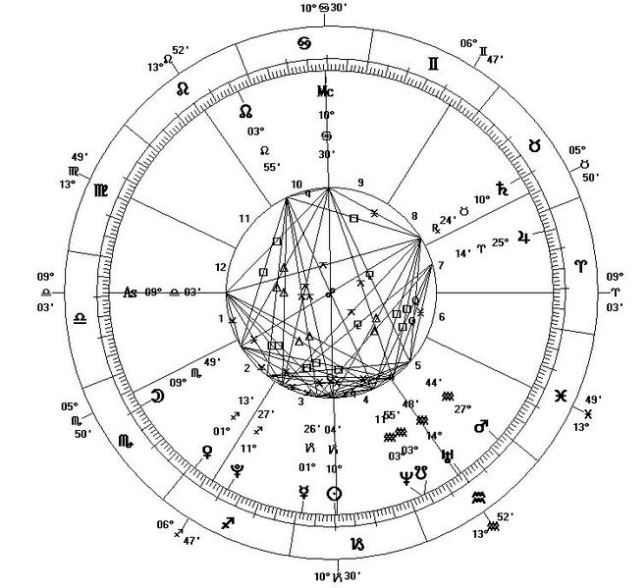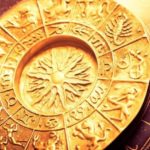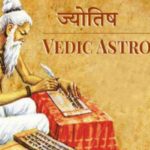Legends are bound in all beliefs, and they have puzzling implications. They create images representing various ideas. Vedic astrology myths and legends thus have deep meanings and symbolism.
Myths and Symbols of Vedic Astrology
In Vedic astrology, various sets of celestial objects and concepts have special significance. Therefore, the Navagrahas or nine planets are of great importance. Next in line are the Nakshatras and Rashis. All these together influence a person’s destiny. Beyond the destiny of the individual, Vedic Astrology also provides the means for determining the future of the world, nations and communities.
Astrology Myths and Facts – Clearing Misconceptions
There are several wrong perceptions about astrology.

Astrology is Based on the Paranormal
This idea is absolutely false. On the contrary, astrologers have to study the real matters and objects on a huge scale, like stars and planets. Astrology is in fact seen as a science in the Indian Vedic system. It is based on astronomy and mathematics. Astrologers have to gain a deep understanding of astronomy, with the ability to determine accurately the position of the planets, stars, constellations, and other celestial objects at any given time. Real astrologers have to undergo rigorous training and then years of practice before they can make accurate predictions.
Astrology is Just the Zodiac Predictions You See in Magazines
Zodiac predictions in magazines are just general ideas about the future, written based on the zodiac signs. There are other factors that influence a person’s life and destiny. So, the predictions in magazines will not be accurate. Vedic astrology goes deeper.
Astrology Can Help You Change Your Future
This, in particular, is the assumption that leads to disappointments. Astrology can help you learn about potential events in the future. But, it cannot change your destiny. However, the astrologer may suggest some remedial measures like visiting certain temples or doing some special pujas. These might help reduce the negative effects of planets and other factors. However, you cannot rewrite your destiny through astrology.
Astrology is Materialistic not Spiritual
Indian Astrology is derived from the Vedas. Every branch of Vedic teaching integrates with the spiritual. Even the prayers for material benefits are intertwined with the spiritual. In ancient times, Rishis used astrology to know the future of empires and rulers and advise them on the best ways to deal with adverse circumstances. On the individual level too, astrologers advice people on how to prepare for negative effects of planets and ask them to visit special temples to mitigate the situation. So, astrology is connected to the spiritual. In India, the word for astrology is Jyothish, which means Lord of Light, or Science of Light.
Vedic Astrology Myths and Legends
In Hindu astrology, the nine planets or Navagrahas, the Nakshatras, and the Rashis play prominent roles. The navagrahas, as the nearest celestial objects to earth, are extremely important.
The Navagrahas

Vedic astrology refers to the nine planets as the Navagrahas. These are – Sun, Moon, Mars, Mercury, Jupiter, Venus, and Saturn, and the two abstract (shadow) planets -Rahu and Ketu.
Surya (The Sun)
The Sun or Surya is the most powerful planet. He is the son of Aditi and Kashyapa. He is powerful, self-illuminatory, the giver of light and heat, and hence symbolizes power, leadership, and ego. Surya also has a generous nature, as he gives heat and light without restraint or discrimination. He rides a chariot drawn by seven horses, which symbolise light and its seven aspects (the color of the spectrum).
Chandra (The Moon)
Chandra was born in the Milky Ocean when the ocean was being churned for Amrita. Hence, he is considered to be extremely handsome. Chandra stands for the mind, thought, intellect, and creativity. The moon takes the radiance of the sun and gives it to us as cool and soothing light. So he also represents the protective and nurturing nature of a mother. Traditionally, artists depict Chandra as riding on a chariot drawn by ten horses, representing the ten senses – Karmendriya and Gyanendriya
Mangala (Mars)
Mangala is also called Bhauma, meaning the son of Bhumi or Earth. He is fierce, courageous, and represents a warrior. He is the military general among the planets. Mars is of a red hue, and so the coral gem represents him. Mangala further stands for confidence, ambition, anger, and a sense of adventure.
Budh (Mercury)
Budh is the illegitimate son of Chandra by Tara according to Astrology Myths and Legends. There is no love lost between father and son, so they are enemy grahas. Budh represents intelligence and the skill of communication. He is also associated with education, logic, mathematics, and oratory skills. Mangala rules technologies related to communication.
Brahaspati (Jupiter)
Brihaspati is the teacher of the Devas, so his other name is Guru. He signifies spiritual knowledge and wisdom. In the horoscope of women, Guru rules the elements of marriage and married life. His grace also guides teachers and philosophers. Guru is so auspicious, his glance or aspect on a malefic planet in a person’s horoscope can reduce that planet’s ill effects.
Shukra (Venus)
Shukracharya is a rival of Brihaspati, he is the teacher of the Asuras. Just as Guru is the teacher on the spiritual plane, Shukra is the guide on the material plane. His grace can grant prosperity and happiness. He stands for love, sexuality, wealth, knowledge, music, dance, and other arts. Venus also rules the lives of people in the creative industry, in the cosmetic, textile, and jewellery industries.
Shani (Saturn)
Shanaishchara means slow mover. As per Astrology Myths and Legends, he is the son of Surya and Chaya Devi, dark in color. Shani is also the brother of Yama. He is generally signifies suffering, poverty, misery, and misfortune. Shani is considered as a judge and teacher, who punishes or rewards people based on their past karma. He makes you reap the effects of your Karma, and then move on to a higher spiritual plane.
Astrology Myths and Legends – Rahu and Ketu
Next, we come to the shadow planets, Rahu and Ketu. When the pot of Amrita or divine nectar was being distributed, one Asura infiltrated the row of Devas and consumed the nectar. However, the sun and the moon spotted him and alerted the others. Vishnu, in the form of Mohini, cut off his head. Still, as he had consumed Amritha, both halves were immortal. Since he was in the form of a snake, the snakehead became Rahu and the tail became Ketu. Surya and Chandra had identified him as an Asura. So the asura, as Rahu and Ketu, causes their eclipses.
In Vedic astronomy, Rahu and Ketu symbolize the north and south nodes of the moon, they represent the intersection points of the sun and moon that cause eclipses.
Rahu, the head without a body stands for hunger without the power of digestion. Therefore, he represents subconscious yearnings, forbidden pleasures, and the desire for power.
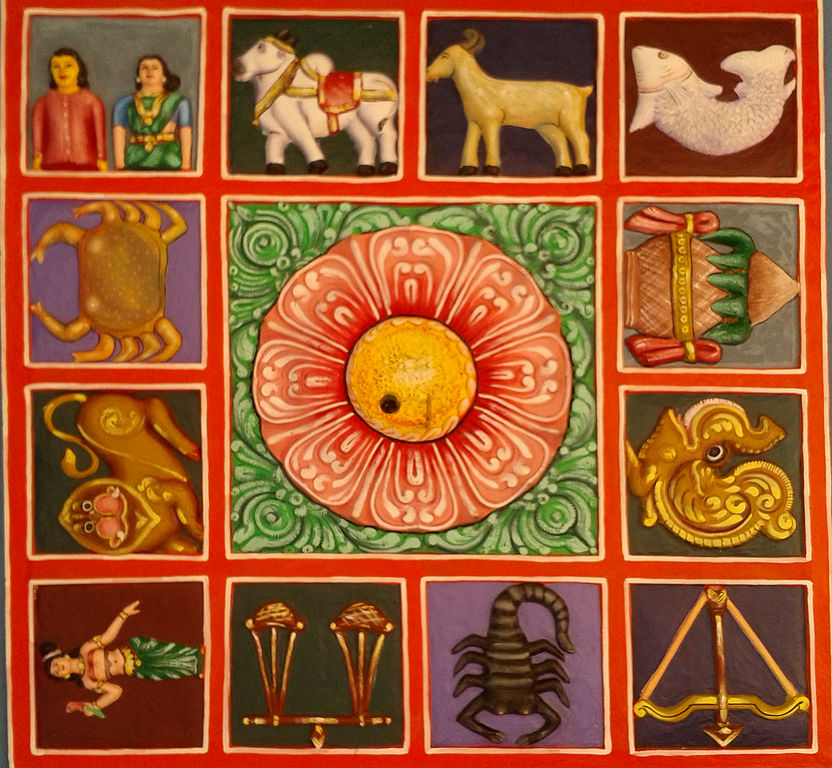
Ketu, the body without the head, is the opposite of Rahu. Ketu, the South Lunar Node, represents austerity, abstinence, ad isolation. Consequently, he can also instigate one on the path of spirituality, to seek Moksha or Liberation from this material world.
The Rashis
Rashis are the signs of the zodiac.
What is the zodiac?
We know that the Earth rotates on its own axis and also revolves around the sun. Seen from the Earth, the sun also seems to traverse a circular path across the sky through the year. This perceived path is called the ecliptic. Solar and lunar eclipses occur when the moon crosses this path. The zodiac is an imaginary band along this ecliptic path, this band extends 8° on either side of the ecliptic. This Zodiac band has 12 sections, each covering 30° of the ecliptic circle. Each of these sections or arcs have a name and a sign. These are the zodiac signs. Zodiac signs represent the perceived shape of the constellation in that arc.
The 12 zodiac signs or Rashis have corresponding names in Indian Astrology. In western astrology, the position of the Sun in relation to the zodiac determines the birth sign. In the Indian system, the birth sign coincides with the position of the Moon along the ecliptic.
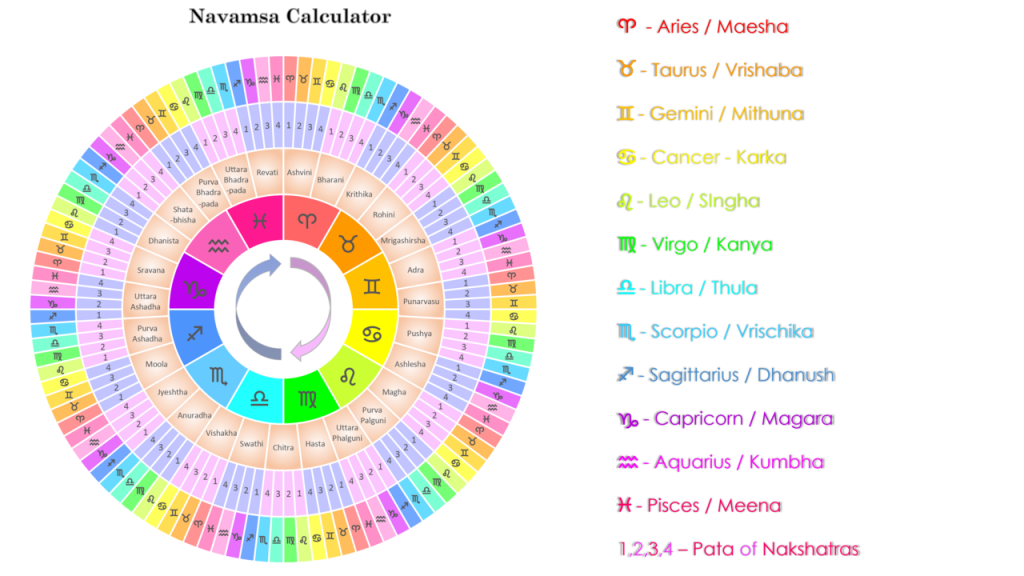
The astrologer draws your natal chart after determining the positions of the navagrahas in relation to the zodiac. The Rashis correspond to the 12 houses in a Jatak. The house that the moon resides in at the time of your birth determines your birth Rashi or Lagna.
The Nakshatras
The moon revolves around the earth, and as it does, its position coincides with the 12 signs of the zodiac. These 12 signs represent the 12 houses in the Jatak. Chandra stays aligned with each sign for 2.3 days. The moon also crosses the path of the Sun 28 times each year. Indian astrologers define these intersection points as Nakshatras or lunar constellations. This subdivision is unique to Vedic astrology.
Astrology Myths and Legends and the Nakshatras
There are twenty-eight Nakshatras or stars, but astrologers only recognize 27 for the natal chart. These 27 stars are the wives of the moon or Chandra. The moon represents the mind, intelligence, and emotions. The 27 stars, in turn, represent various moods and characteristics. Each star covers 13.2° arcs of the Zodiac. Each of these lunar constellations is further divided into smaller 3.2° arcs. Thus, each nakshatra has four quarters, called padas. These deeper subdivisions further help refine the accuracy of astrological calculations and predictions.
Each nakshatra has a ruling deity and a ruling planet. Astrologers look at the position of the moon at the time of your birth, and identify the star which aligns with that position. This star is your birth star or Janma Nakshatra. Your natal chart is accurately cast based on your birth star.
Thus, all the astrology myths and legends come together to create a symbolism that helps interpret your nature, your strengths and weaknesses, your relationships, and your destiny.




